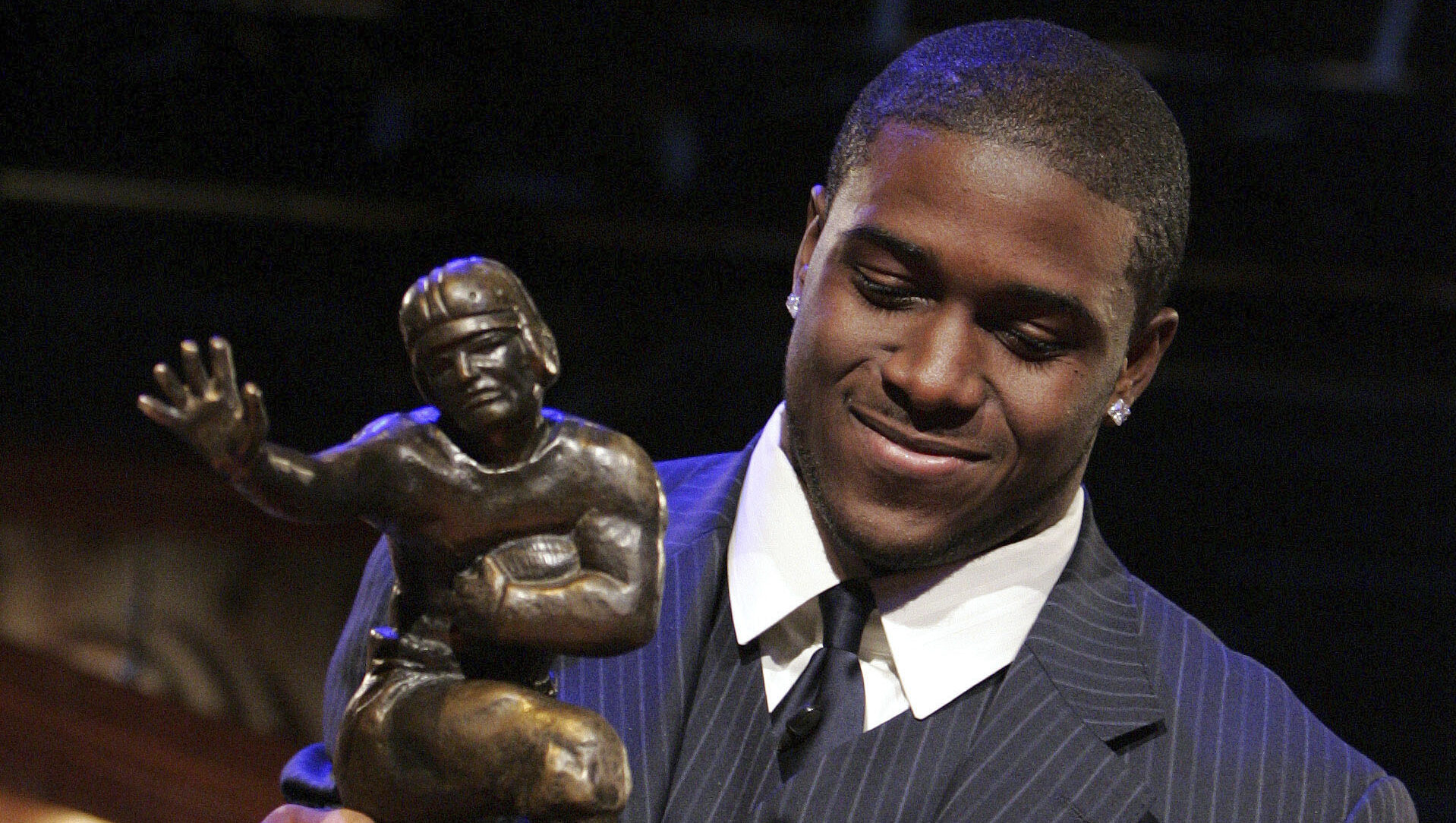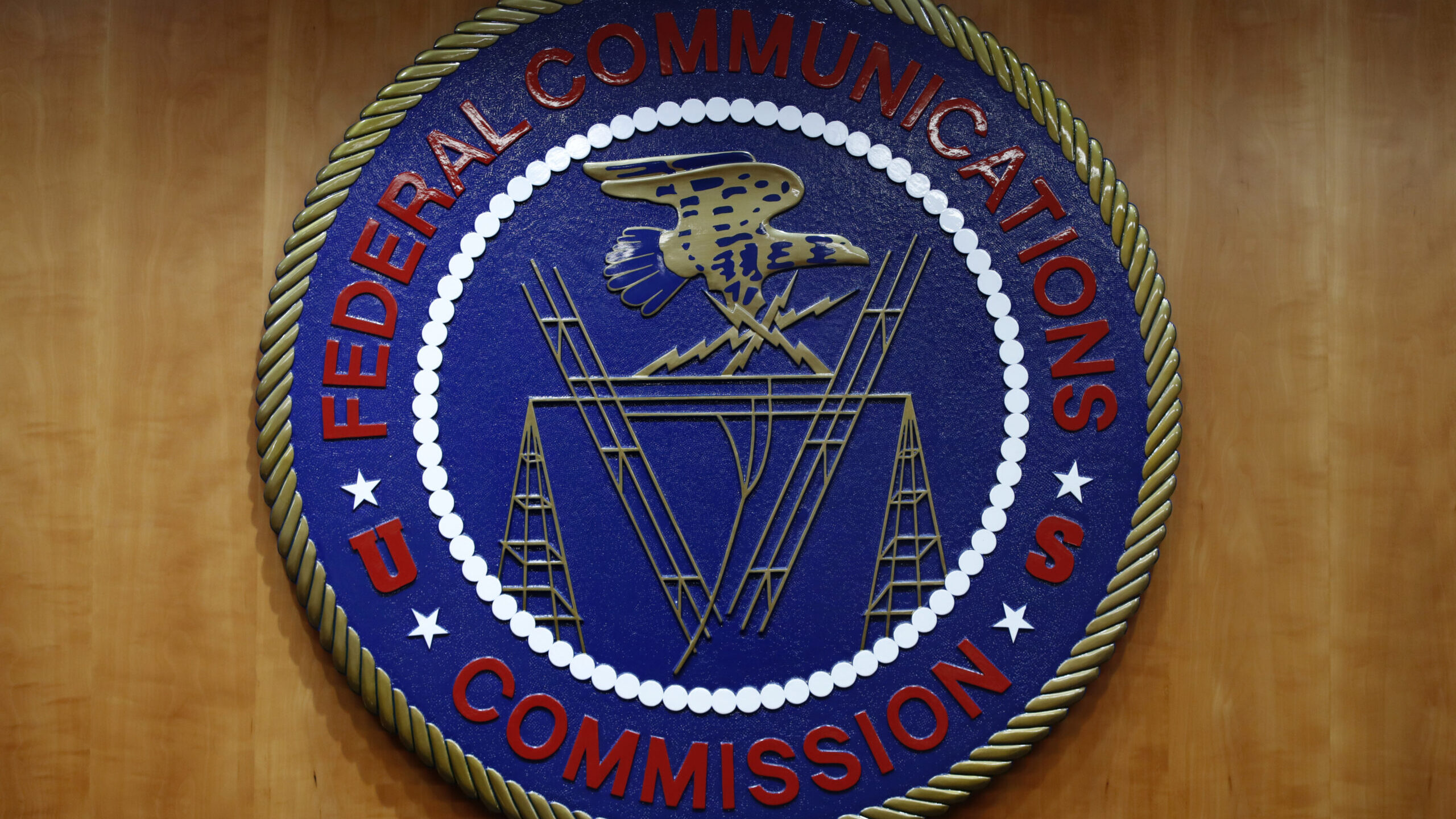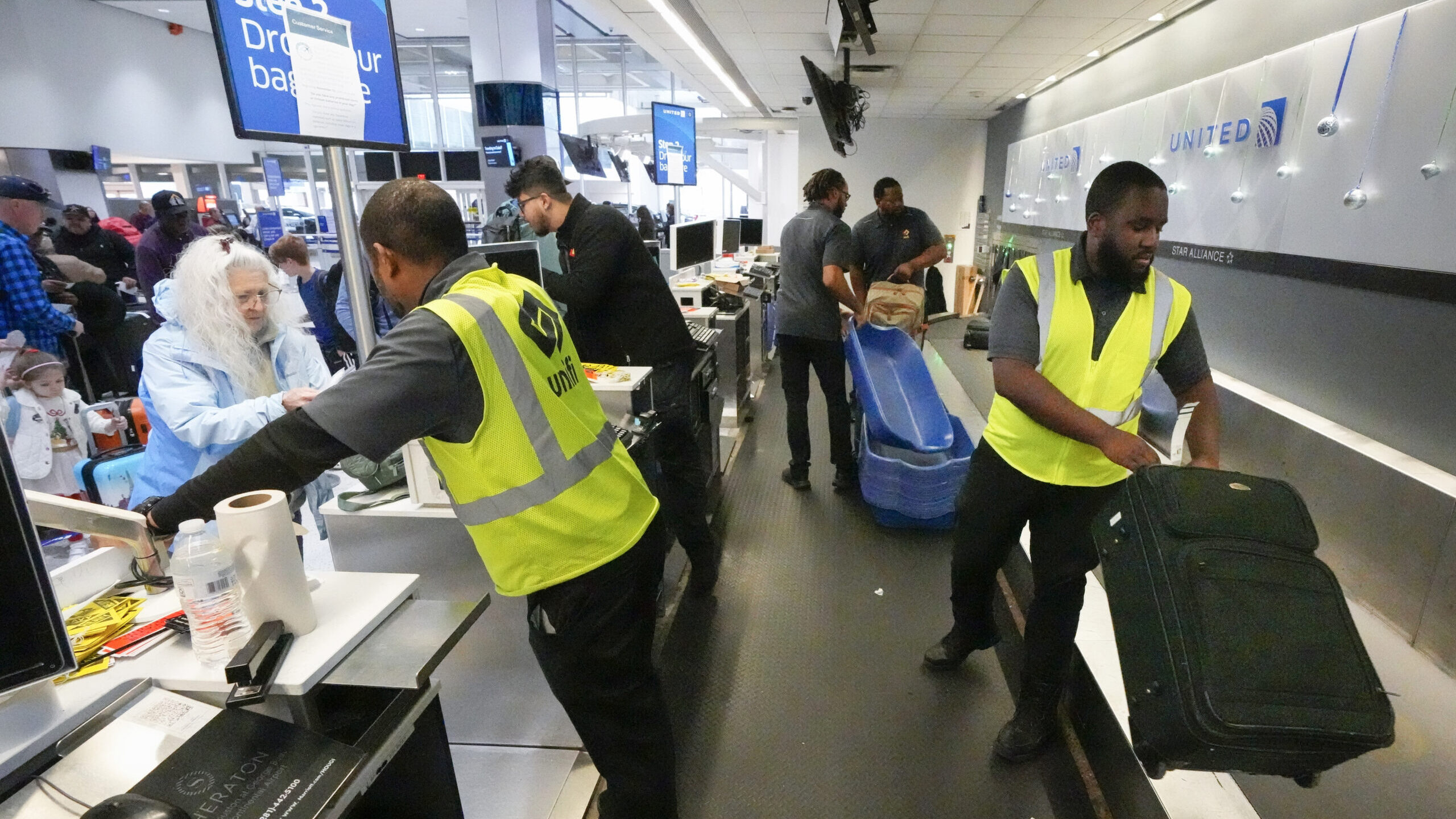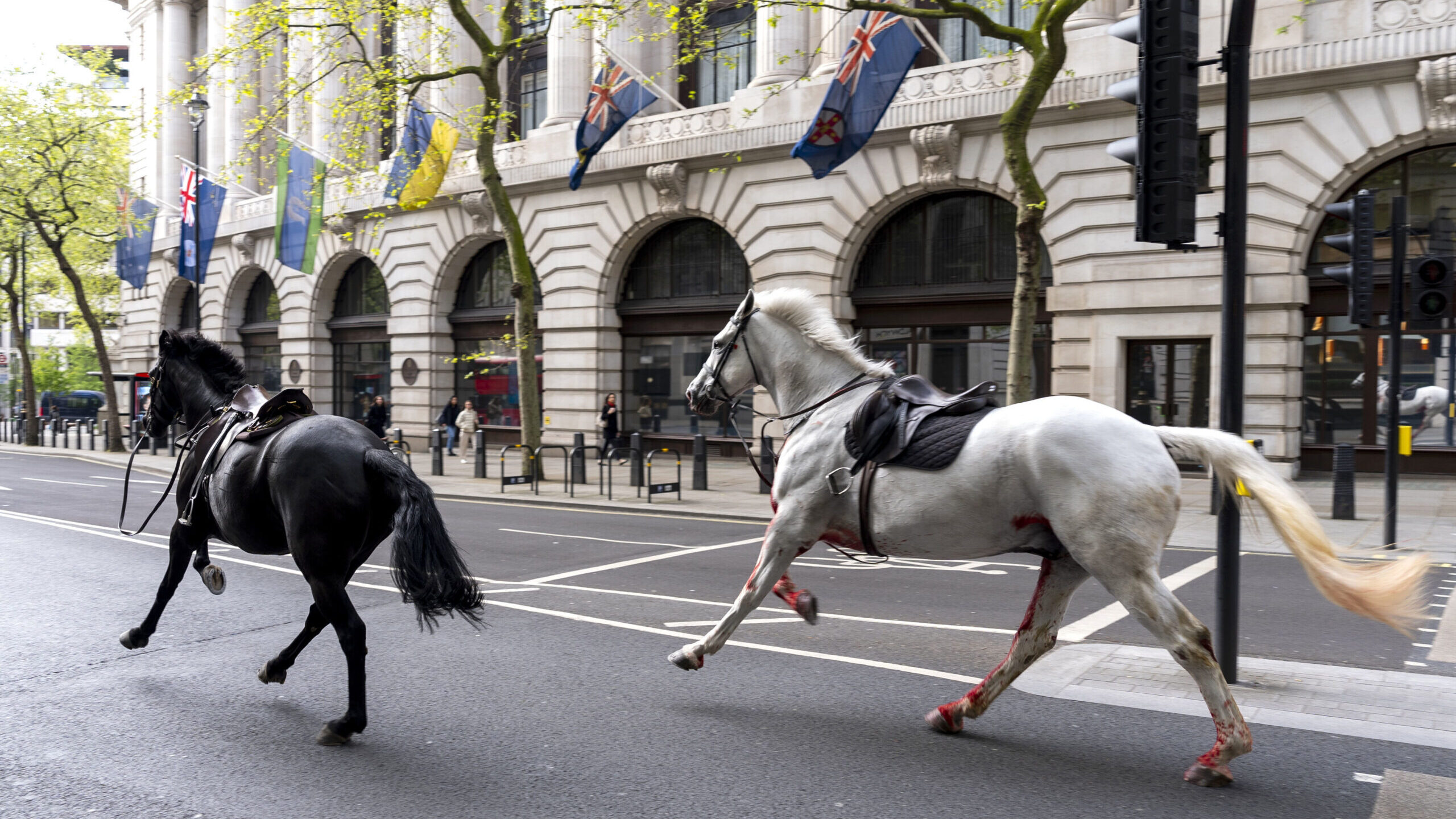Experts cite training gaps in accidental shootings by police
Dec 9, 2019, 2:15 PM | Updated: Dec 30, 2022, 11:25 am
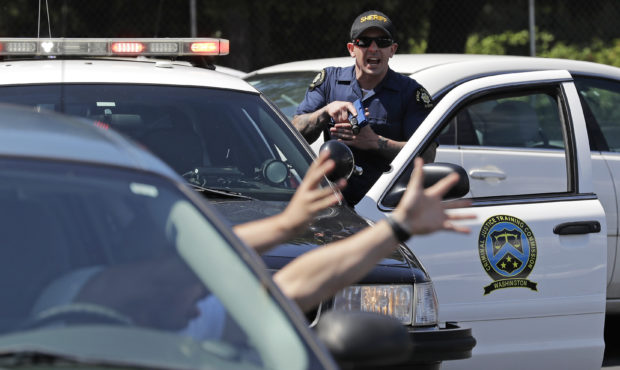
In this July 16, 2019, photo, a King County Sheriff's deputy holds a training weapon as he practices a traffic stop during a class at Washington state's Basic Law Enforcement Academy in Burien, Wash. Accidental shootings by police happen across the United States every year, an Associated Press investigation has found, and cadets at Washington's academy, which is required for all entry-level Washington state law enforcement officers, must have 90 hours of firearms training, but requirements in other states vary widely. (AP Photo/Ted S. Warren)
(AP Photo/Ted S. Warren)
SEATTLE (AP) — When an Iowa mother tried to take her child from her husband during an argument on a snowy sidewalk in 2015, an officer stepped in to stop the scuffle, but he accidentally fired his weapon as a dog approached. The bullet went through the woman’s arm and into her chest, killing her as her family watched in horror.
When a Minnesota sergeant stopped a motorcyclist after a 2015 high-speed chase, he stepped out of his patrol car with his firearm drawn, flush with adrenaline, and accidentally shot the man in the arm.
And an Arkansas police officer fatally shot a suspect in 2012 as she tried to get him into handcuffs.
Accidental shootings by law enforcement have happened in recent years at agencies small and large and at all levels — city, county, state and federal — across the U.S., an Associated Press investigation found. They’ve caused hundreds of injuries to officers, suspects and bystanders, and sometimes they’ve caused deaths.
Experts say it’s because officers don’t get the training they need to handle their guns proficiently, especially in life-and-death situations.
The methods used to train officers with their firearms “create the illusion of learning” but are inadequate for the demands of today’s policing, said Bill Lewinski, executive director of the Illinois-based Force Science Institute, which provides research and training to law enforcement agencies.
“The training has to match the shooting challenges on the street,” he said. “We don’t do enough street training connected to actual skill and decision-making that’s required of officers in this type of encounter. Some officers only handle their guns once a year.”
Officers are most proficient with their guns immediately after graduating from a police academy, experts say.
After that, most are tested only once or twice a year in “qualifications” that measure a minimum level of firearms proficiency. There are no federal guidelines for these tests so there are thousands of different standards across the county.
No one tracks these shootings nationwide, so the AP collected media reports and surveyed agencies across the country through public records requests. The review was not comprehensive, due to the sheer number of U.S. law enforcement agencies and a lack of reporting requirements for such shootings. But it provides a snapshot of the problem, documenting 1,422 unintentional discharges since 2012 at 258 agencies, and uncovering detailed reports on 426.
The tally includes any incident in which a gun went off and the officer did not intend it to, whether they were cleaning or unloading a weapon or surging with adrenaline while responding to a call. Some shootings occurred because of involuntary muscle reflexes, experts said, or because the officer simply tripped.
While countless law enforcement officers safely perform their duties every day, some experts say even a small number of accidental shootings is unacceptable because they are preventable.
“Ninety-nine out of 100 times, there is not something wrong with the gun,” said Paul Markel, a former police officer and firearms instructor in Mississippi. “It’s the person holding it.”
Tragic Consequences
Gabe Steele describes Jan. 6, 2015, as the worst day of his life.
He and his wife, Autumn, had been having marital problems, issues he partly blames on his PTSD from two tours in Iraq. When she showed up at their Burlington, Iowa, home that morning, he called 911, fearing another fight.
Autumn Steele was trying to wrest their 3-year-old son from Gabe’s arms on the sidewalk when Officer Jesse Hill approached.
Just then, their dog darted toward Hill, barking loudly, and the officer lost his footing, firing two shots as he fell backward into the snow. One bullet hit the dog, the other hit 34-year-old Autumn Steele, killing her.
Hill became frantic.
“I pulled my gun and shot it, and I hit her,” he told Officer Tim Merryman, according to Hill’s body camera video. “Oh, my God, no!”
Gabe Steele knew instantly his wife was in trouble. She “actually sat down, looked me in the eye” before she died, he recalled, choking up, in a recent exclusive interview. “That was tough.”
The AP found 21 cases where people died in accidental shootings by police. It identified another 134 where the officer injured himself, and 45 where an accidental discharge injured another officer. An officer accidentally shot bystanders in 34 instances and suspects in 19.
Unintentional shootings usually lead to two investigations: one by an outside agency to determine whether charges should be filed, and an internal review to see if any policies were violated and punishment, such as suspension, is appropriate.
In Autumn Steele’s case, state investigators reviewed the shooting and sent the matter to then-Des Moines County Attorney Amy Beavers to determine if Hill should be charged.
Beavers compared the evidence against Iowa’s homicide statutes: First- and second-degree murder and voluntary manslaughter didn’t fit the scene, she said; involuntary manslaughter would apply only if the death occurred while the officer committed a crime; and Iowa has no negligent homicide law. She decided Hill could not be charged.
“(It) appeared to me that Officer Hill was trying to protect himself from the dog and an assault,” Beavers said in a recent interview, adding that the decision still weighs on her. “It was a tragic accident.”
Hill also kept his job, including working as a school security officer. His lawyer did not respond to a request for comment, and Burlington Police Chief Dennis Kramer declined AP interviews with himself and Hill.
Gabe Steele, 40, thinks Hill should have been held accountable.
“He just got to go on vacation and get paid for it, for taking my son’s mother away,” Steele said. “No one has ever apologized to me and my son. That hurts.”
Steele’s family filed a wrongful death suit against the city and Hill, and reached a $2 million settlement in 2018, according to their lawyer.
The AP’s investigation found 17 cases in which the officer was charged and 28 that ended in lawsuits. Settlements varied from $200,000 to several million.
Pervasive Problem
Law enforcement agencies have different terms for these shootings, including “accidental,” “negligent,” or “unintentional” discharges.
But Doug Tangen, firearms program manager at Washington state’s law enforcement training center, argues they are all caused by a degree of negligence because at some point the officer violated one or more of the four universal firearms safety rules: Assume all guns are loaded, always point the muzzle in a safe direction, keep your finger off the trigger, and be sure of your target and what is beyond it.
“Guns don’t go off by themselves,” Tangen said.
In addition to a lack of standards for police shooting qualifications, there are no federal regulations mandating the amount of firearms training officers must receive at the police academy or once they graduate, Tangen said.
The U.S. Justice Department has issued consent decrees mandating certain types of training following use-of-force complaints, but those orders focused mostly on de-escalation training, not firearms, he said.
Accidental shootings happen at agencies of all sizes. The Los Angeles County Sheriff’s Department, for example, reported 140 between 2012 and 2018. New York City police had 100 during that time, while the smaller Jackson, Mississippi, police department had 93, the AP found.
They also continue to occur at federal agencies, more than a decade after the Justice Department’s inspector general documented high rates.
The watchdog office studied shootings by four federal agencies from 2000 to 2003. It found that of 267 shootings reported, 38 percent were unintentional.
According to the AP’s review of records obtained through Freedom of Information Act requests, the FBI has had at least 48 accidental shootings in the past five years. U.S. Customs and Border Protection has had at least 122 since 2012, and the Bureau of Alcohol, Tobacco, Firearms and Explosives 27.
Survival Stress
When SWAT officers searched the Las Vegas hotel room used by Stephen Paddock to massacre people attending the 91 Harvest Festival in 2017, they used an explosive device to breach a door to an adjoining room, and three loud blasts erupted.
Officers in the hallway flooded into the room, asking: “Where did those shots come from? Was that us?” One of the officers called out that he accidentally fired his assault rifle, hitting a chair, cabinet and wall. No one was hurt.
The AP identified six cases where police accidentally fired their weapons while responding to reports of active shooters, including at schools. In all, 200 accidental shootings happened while officers were on duty or were responding to crimes.
In some cases, they were hyped up due to adrenaline, which can impair officers’ hearing and vision and even skew their perception of time.
“When officers suffer survival stress, real survival stress, all of their senses start to degrade,” said Sean Hendrickson, an instructor at the Washington State Criminal Justice Training Commission, which trains all police and sheriff’s deputies in the state.
An Eden Prairie, Minnesota, police sergeant cited this phenomenon after he accidentally shot a motorcyclist in 2015.
Sgt. Lonnie Soppeland stopped the biker after a middle-of-the-night, high-speed chase along county roads, according to police and court records.
Soppeland drew his firearm as he stepped out of his patrol car, and a round went off, hitting the motorcyclist in the arm.
“You actually shot me!” a distressed and bleeding Matthew Hovland-Knase is heard telling the sergeant in his dashcam video. Soppeland starts swearing and rushes to his aid.
“It was not intentional, I can tell you that,” he responds.
Soppeland later explained to Hennepin County sheriff’s investigators that as he chased the motorcycle, he watched it nearly crash head-on into a tow truck.
“This added stress and adrenaline to my body,” he told them. “It was not my conscious choice to discharge my firearm.”
Soppeland was assigned to administrative work during the investigation and later returned to regular duties with no further disciplinary action.
Muscle Contractions
Other accidental shootings by police have been attributed to muscle reflexes — one hand or arm jerks or contracts, causing the other hand or arm to jerk or contract — including the 2012 killing of a suspect in Alexander, Arkansas.
Officer Nancy Cummings says she stopped to check on Carleton Wallace, who was walking down the middle of the street, and he pulled a gun on her. She told him to drop it, and he threw it in the bushes.
Cummings then attempted to handcuff Wallace, but he yanked away, causing her to fall. As she tried to hold onto him, the gun fired, the court record said.
Wallace was shot in the back.
Cummings later said she didn’t mean for the gun to go off and remembers looking at her hand and not knowing what happened, according to her statement in response to a federal wrongful death lawsuit.
She was charged with manslaughter. An agent who wrote the arrest affidavit said the way Cummings effected the arrest “with her gun in her hand with the finger on the trigger well was reckless,” court records said.
Thomas Martin, an officer and firearms expert, testified at a trial in the lawsuit that the gun’s firing was the result of a “natural reflex.”
“If Ms. Cummings’ finger were situated outside the trigger guard and Mr. Wallace’s actions caused her to reflexively squeeze her right hand, it is possible that Cummings’ finger inadvertently and unintentionally slipped into the trigger guard and in one fluid motion, disengaged the safety lever and pulled the trigger,” he wrote in an affidavit.
Cummings was acquitted, and a jury ruled in her favor in the lawsuit.
A recent study by the Force Science Institute, the research and consulting group, cited involuntary muscle contractions as one of the potential main factors in accidental shootings by police.
The study categorized behaviors based on unintentional discharges outlined in 171 reports from four law enforcement agencies. Other shootings occurred when officers lost their balance or experienced a “startle response.”
In most cases, their finger was on the trigger when it shouldn’t have been, the study found.
Injuries happened in 20% of the 171 reports — three-quarters of them to the officer, and the rest to fellow officers and suspects. Deaths occurred in 8%, with 85% being suspects and 15% fellow officers.
“These findings suggest that injuries and deaths may be more prevalent than previously reported,” the study said.
Training Shortfalls
Experts agree the way to reduce these shootings is to rethink firearms training, starting with the amount required.
While all academies require cadets to undergo a certain number of hours of firearms instruction, the AP found how many varies widely.
Georgia, Illinois and Indiana, for example, call for 40 hours of specific firearms training, while Florida requires 80, Utah 52 and Missouri 66 hours.
Cadets at Washington’s academy must have 90 hours of firearms training. But once they go to work for a department, the amount of additional training they receive is uncertain, said Hendrickson, the instructor.
“Those skills that they receive here at the academy, firearms skills, degrade pretty rapidly after they leave the academy if they’re not practicing or getting more training,” he said.
Another issue is the type of training used. Most academies use “block and silo” methods, which bombard officers with information and don’t present it in a coordinated manner, so they don’t retain it, experts say.
What’s lacking are standards for regular, ongoing training — including scenario-based exercises that mirror high-stress situations — at the academy and over the course of an officer’s career.
Spending money up front on training reduces the possibility of having to spend it later — on lawsuits, said Jason Wuestenberg, executive director of the National Law Enforcement Firearms Instructors Association.
“Usually when something bad happens, it’s due to a lack of training or leadership,” he said.
___
More on AP’s findings: https://assets.documentcloud.org/documents/6570974/Accidental-shootings-by-police.pdf
___
Follow Martha Bellisle at https://twitter.com/marthabellisle


